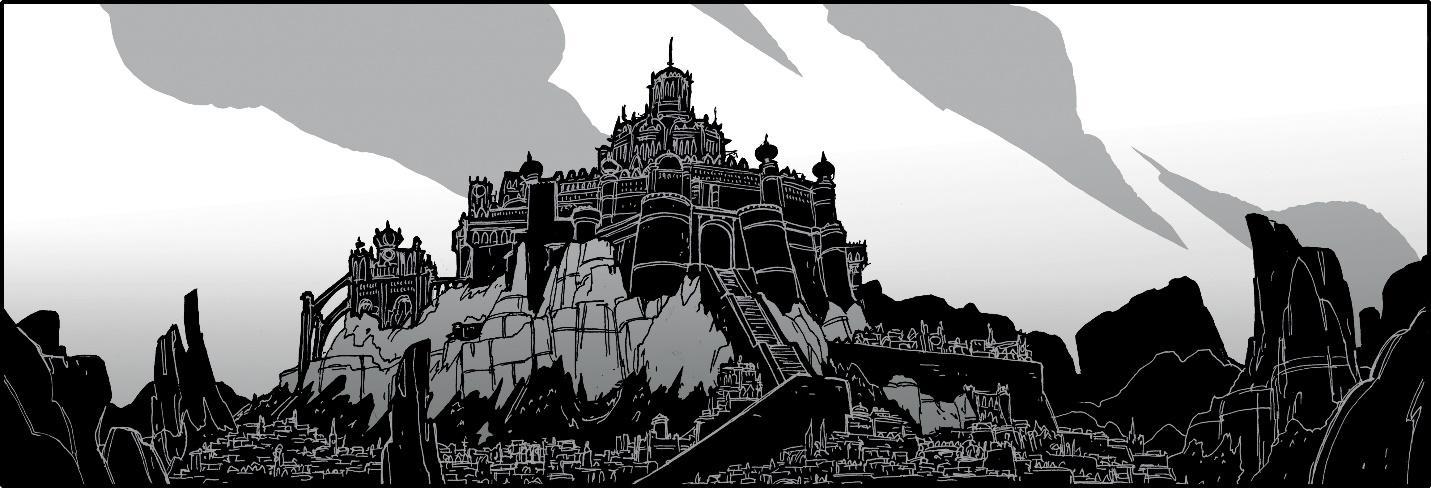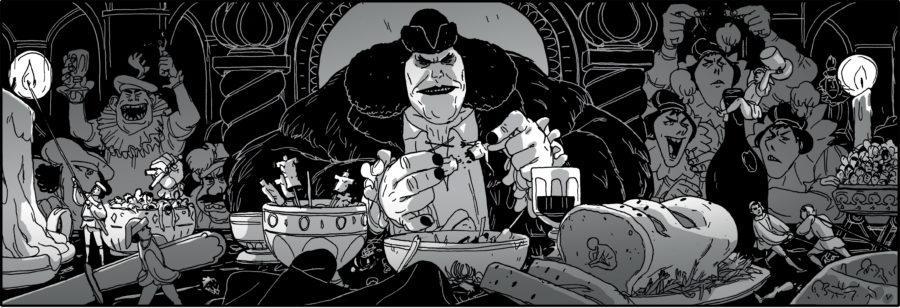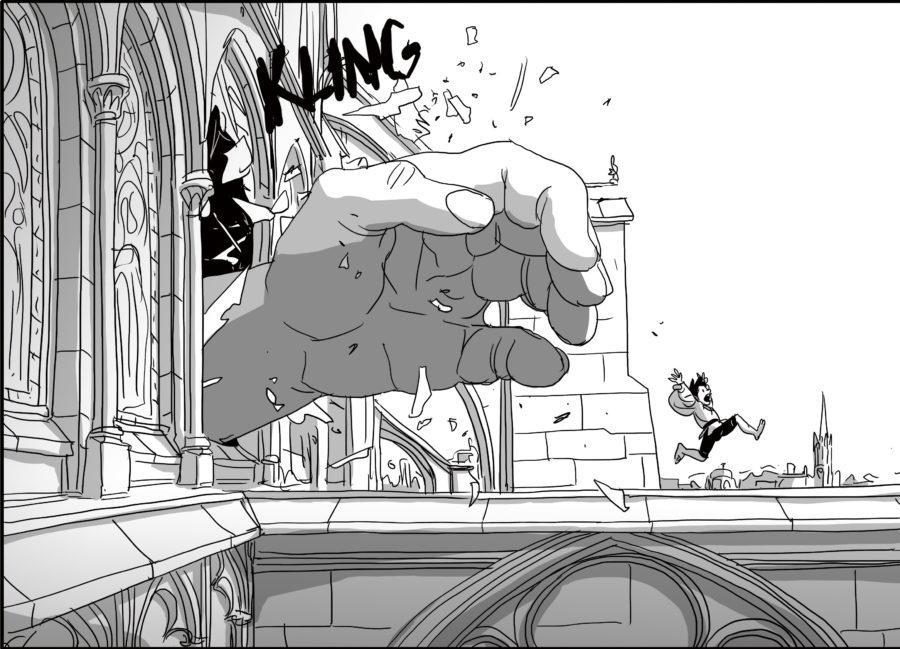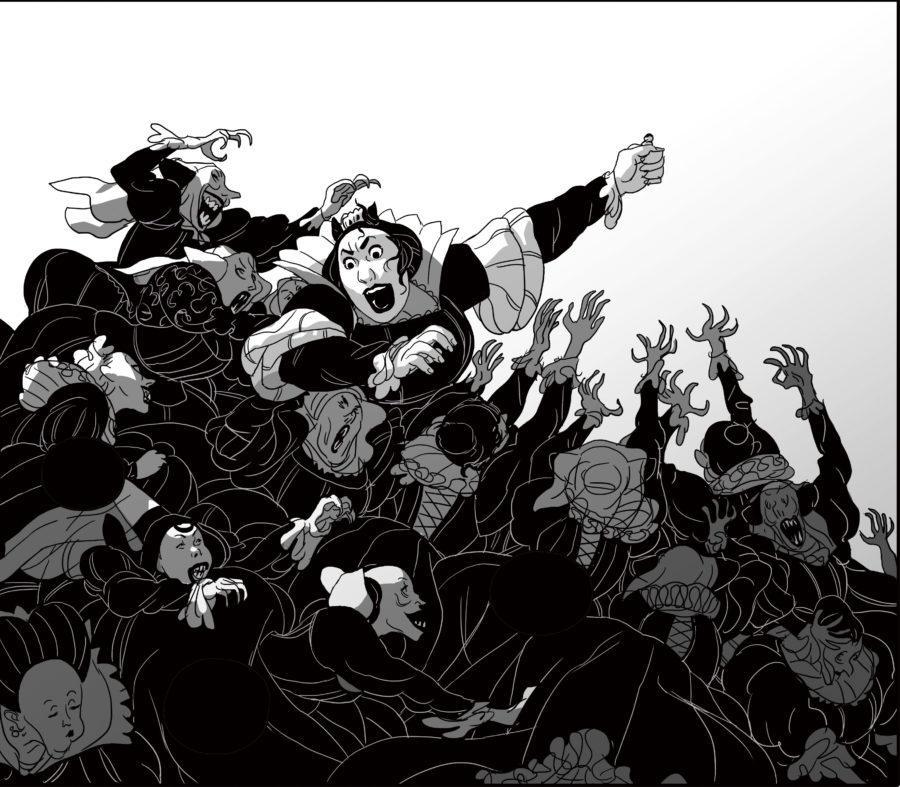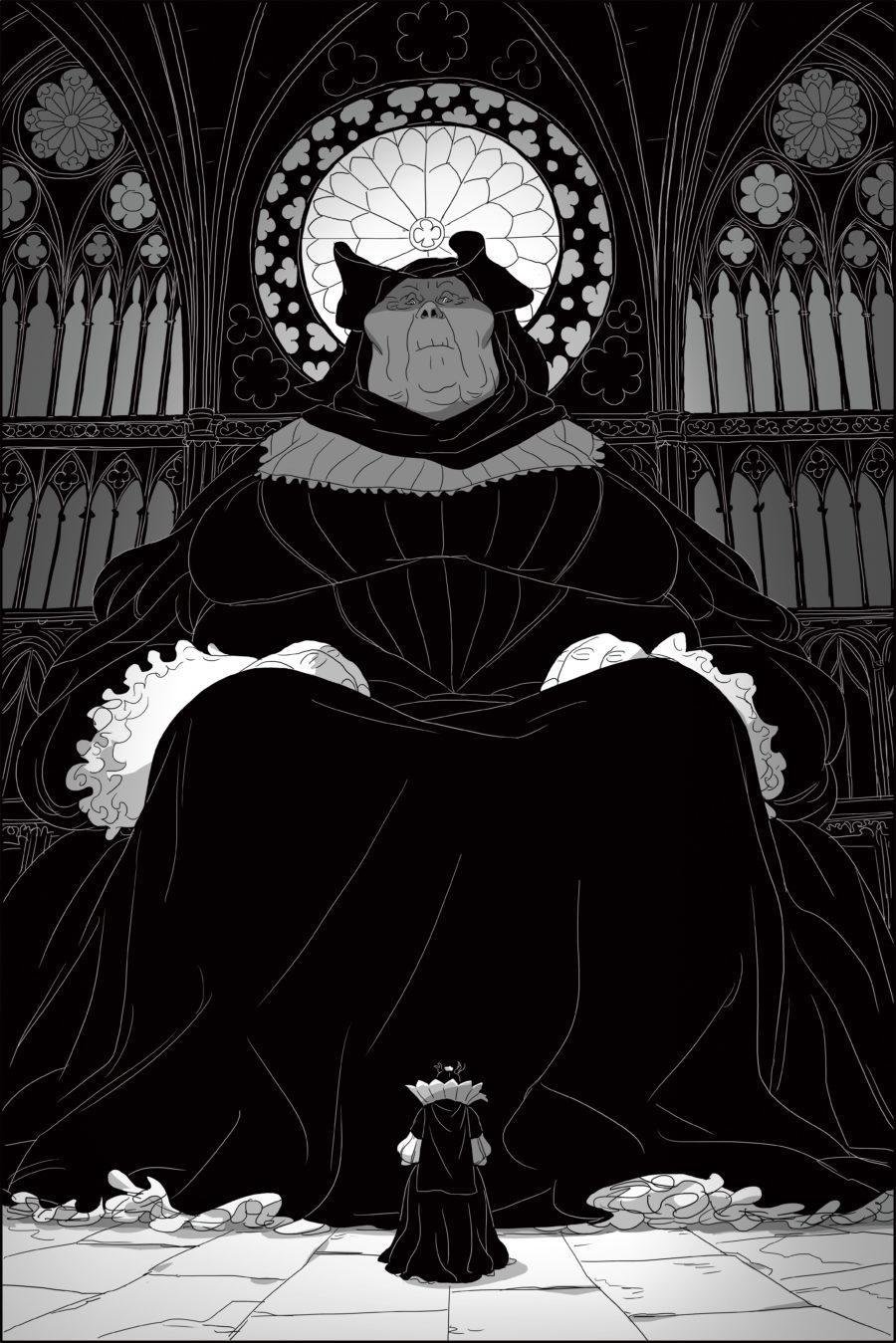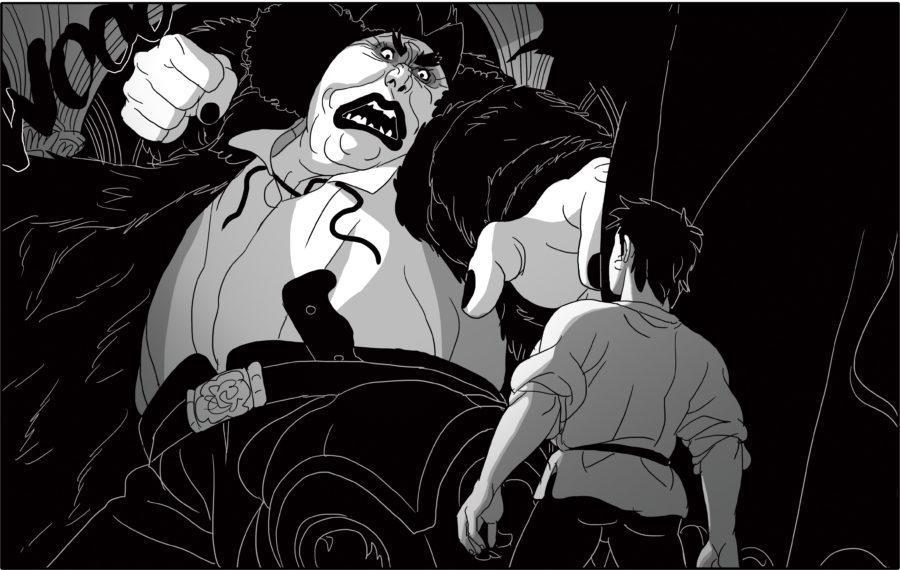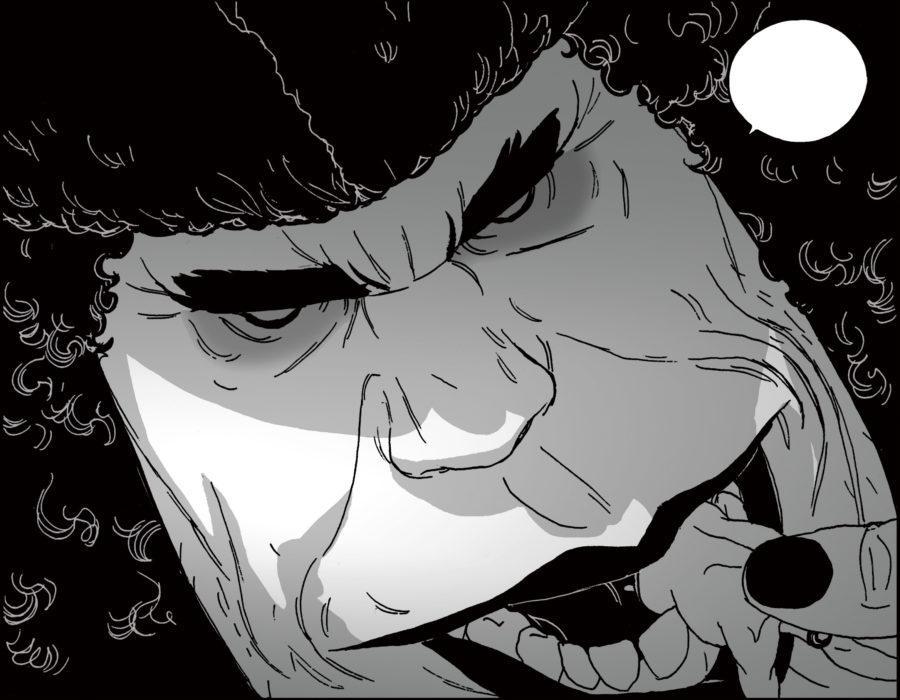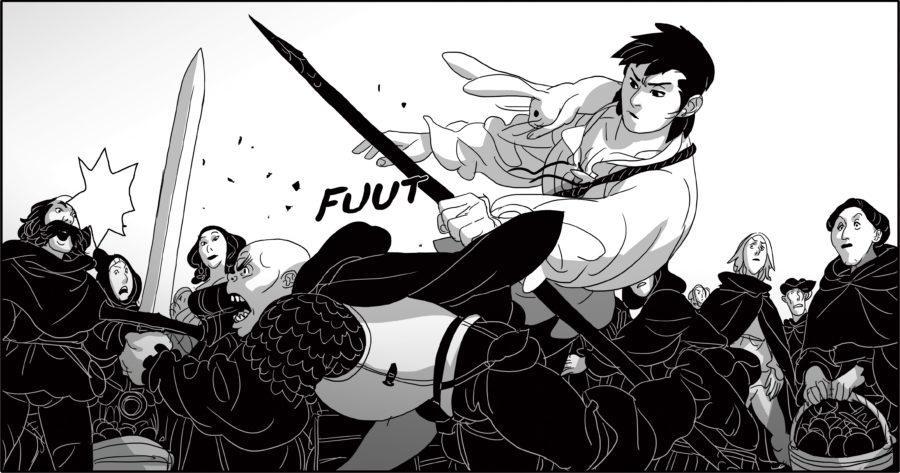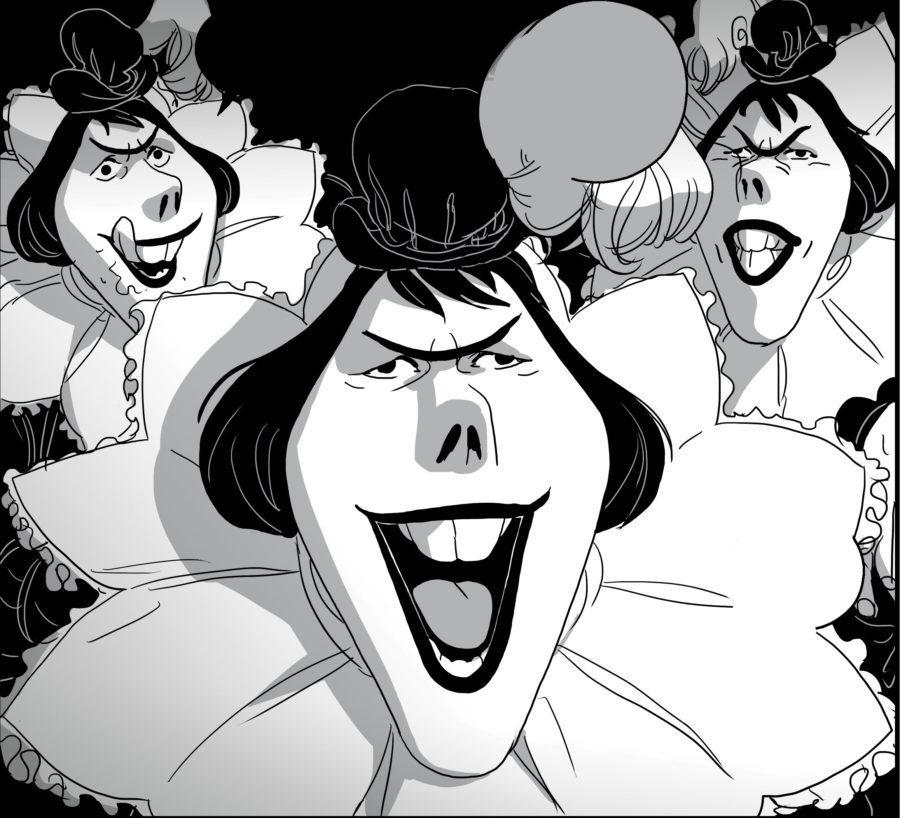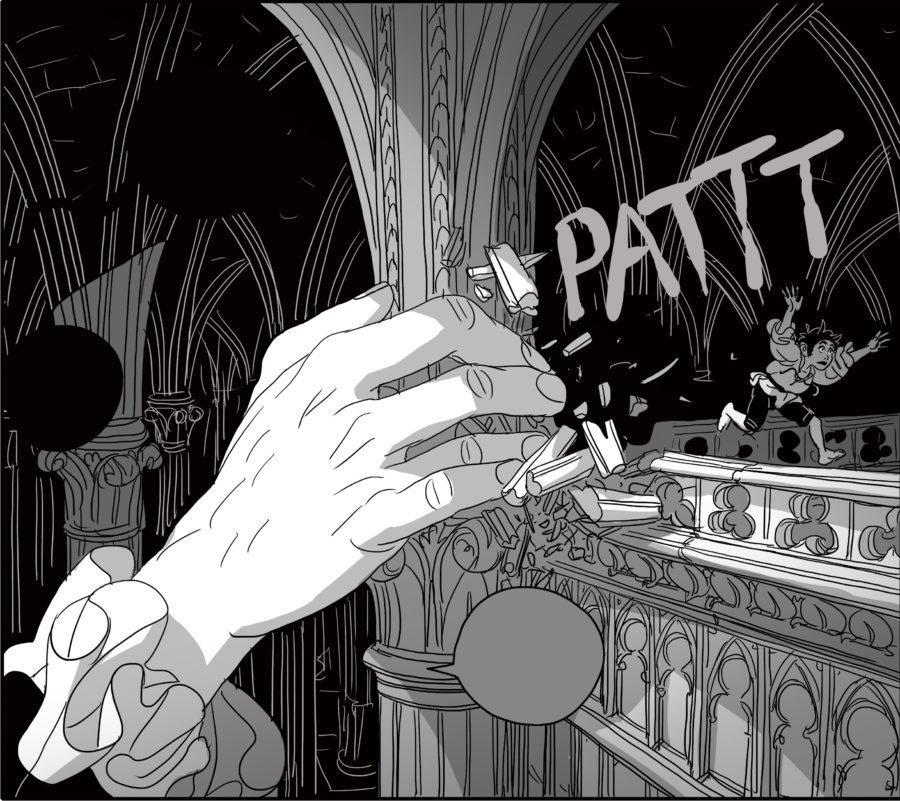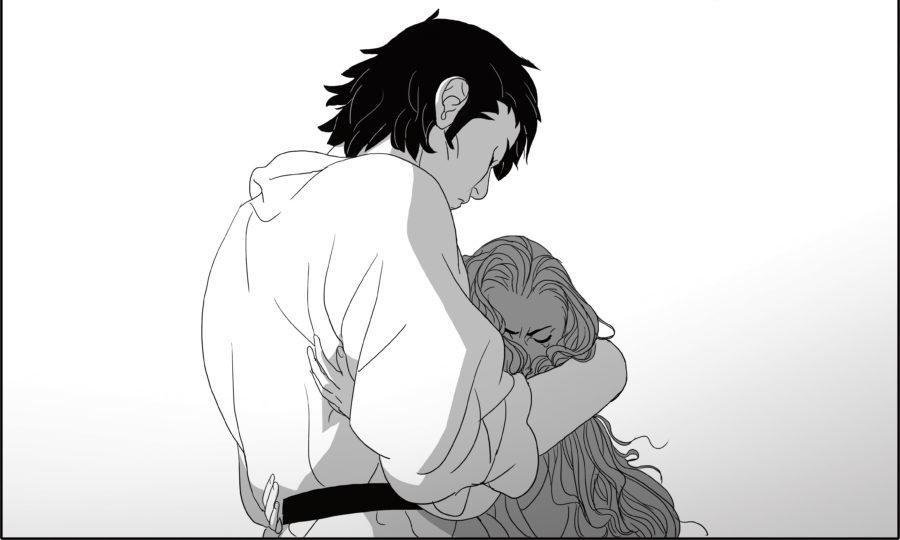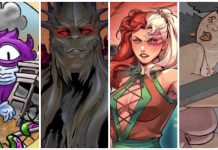The Ogre Gods series debuted this Fall with the release of Petit, the first standalone tale introducing readers to the hauntingly beautifully and equally horrific fairy tale world ruled by Giants. This first book has won numerous awards around the world, as has its follow-up, standalone second book, Half-Blood.
We sat down with author Hubert and illustrator Bertrand Gatignol to discuss this fascinating original universe and their creative process approaching such an astounding new series of beautiful hardcovers published under the Magnetic imprint.
[Magnetic Press is a sister company of Syndicated Comics, which owns The Beat.]
The Beat: Let me start by saying that the Ogre Gods series is, in my opinion (and clearly that of many others), nothing short of a masterpiece of world-building, and one of the most breathtakingly original and haunting titles ever published. The breadth of world history, the depth of each character, and the consistently surprising twists put this on par with other epic fantasy tales such as Game of Thrones and Lord of the Rings. You have really created a massive, breathing universe here. How complete was your vision of this universe when you started? Did you already have all of the intricacies outlined, or did the world develop as you began working on the first volume?
Hubert: I first wrote Petit as a one-shot. There was already an entire universe (defined in that story), and when we decided to continue with Bertrand, it was immediately clear to us that we did not want to do a sequel of a sequel. We therefore established this principle of a new character in each story. This allows us to move the point of view each time and extend the universe instead of regurgitating the matter of book one until exhaustion. It is therefore a universe in constant expansion, and it is not yet finished. It still has many mystery areas for me. I am a big fan of history and a book devourer, so I try to build on the structure of actual historical events to create a sense of reality… before going to the weird and the exaggerated, which is a bit of the basic reason we work with Bertrand! Petit grew up almost on its own, fed by a very strong necessity: at that moment, my mother had just fallen very ill, and as often occurs in these cases, many family secrets came out of the closet. And suddenly, I had explanations for things that I had been wondering about all my life, things that define me as an individual. I had the impression of having been manipulated by invisible threads all my life, even wondering if I ever had a single moment of free will. It was extremely disturbing. This very strong feeling turned into a story almost on its own around the concept of family determinism.
Bertrand: The universe of the Ogres Gods is the fruit of the twisted imagination of Hubert! I have the feeling that it is constructed in a very organic way, as the result of our exchanges about the likelihood or not of the scenes and subjects that Hubert has in mind.
The Beat: Hubert, you first entered the comic industry as a designer and colorist on many popular books, including Spirou and a number of well-known titles by the cartoonist Jason. At what point did you start thinking about writing comics as well?
Hubert: Actually, I was already writing in parallel. When I graduated from the Beaux-Arts, I had a very strong need to confront writing, and I spent a year writing a novel (unpublished and probably unpublishable, as it was experimental to the point of being almost illegible!) then short stories highly influenced by (Argentinian writer Jorge Luis) Borgès. I have been friends with (artist/author) Yoann, the current illustrator of Spirou, since Beaux-Arts. As he knew I was writing, he asked me for a short script, but it took me so long to come up with an idea (moving from experimental writing to comic script was not obvious) that he had already appealed to someone else. But I enjoyed the experience, and I continued to write scripts just for fun, before meeting designers who agreed to work with me: it’s hard to start and find someone who wants to get involved in the creation of a common project when you are just a beginner. So I was already a colorist when my first books as a writer finally came out.
The Beat: Bertrand, your first career out of art school was in feature animation, first on the noir CG cyberpunk feature RENAISSANCE, then later on with the CG series SKYLAND. Your first comic work was a CARMEN AND TRAVIS story (which you illustrated under the penname Zemia) — how did this leap from animation to illustrating comics happen?
Bertrand: If I remember correctly, it was during the production of the Iron Man (Armored Adventures) animated series (for which I created the character design of (young) Tony Stark… with the head of Petit! :) that the weariness of fighting on a big production took its toll on me. It was while talking with (author/director) Merwan (Chabane), who was sweating on the production of his animated short film (“Biotope”) that the idea came to us to create a comic book together. This first “real comic” was called Pistouvi and it’s this project that made me want to produce comics.
The Beat: Hubert, your first story as writer was THE LEGACY OF THE ALCHEMIST, illustrated by Herve Tanquerelle, followed by GREEN EYES, illustrated by Zanzim. What was it like writing for another artist? Had you considered illustrating either story yourself first?
Hubert: I love drawing too much to do that to him! I have had the chance to collaborate with great graphic artists as both a colorist and writer (Paul Gillon, Jason, David B, Sean Phillips, Kersacoët, Bertrand, and many others) and I don’t have the potential to be a suitable illustrator. We must all know how to recognize our limits. Moreso, however, I like working in collaboration. Each time, I write for the drawing style and personality of a particular artist. It’s like a conversation: we don’t have the same type of conversation depending on the person we are talking to, but rather according to common interests. And as each project is written in a permanent exchange with my co-author(s), the result is richer than if I did it alone. I am all in favor of collective intelligence! In an interview, looking back at the origins of Half-Blood, Bertrand and I realized that we did not really know who had the idea to make Yori someone young and beautiful (not inevitably logical for a politician), which was the founding paradox of the whole story: I am convinced that it is Bertrand who brought this idea, and he maintains that it came from me!
The Beat: Bertrand, you’ve continued to stay involved primarily in animation, designing characters for the IRON MAN ARMORED ADVENTURES series and GRIZZLY AND THE LEMMINGS, yet you’ve also produced several full books, including the charming PISTOUVI (re-released in color as JEANNE). How much commitment did it take to balance both careers at the time?
Bertrand: I still haven’t completely found that balance. I would define my role in animation as more like a casting director and in comics as a director. The time / money ratio is symmetrically opposite, and the problem is that comics are becoming more and more important in my career. It’s a permanent struggle that never finds peace, which is lucky because if I had the notion of balancing things, I would have been pretty stupid to get sucked into a level of commitment such as the Ogres Gods!!! Balance is boredom.
The Beat: Hubert, you began writing more prolifically around 2012. At what point did you consider writing something you really wanted to embrace?
Hubert: For years, I said that I was a professional colorist and an amateur writer, even though I really could not live without writing. At first, I was told that what I was doing was a little weird, and the reception, especially among publishers, was not necessarily very enthusiastic! Recognition came, especially after the release of Miss Don’t Touch Me and Beauty with (husband and wife art team) Kerascoet (published in English by NBM Publishing), at which point I started telling myself that ‘amateur’ was not very credible! But I did not have time to do more projects: until 2012, in addition to the screenwriting and coloring, I was also one of the leaders of the Syndicat des Comiceurs des Comités in France. We were in the midst of a very tense negotiation with the Ministry of Culture and the Publishers’ Union to have our say in the adaptation of the Intellectual Property Code to Digital issues, and more generally to rebalance the relationship between authors and publishers a little. (In France, the contracts that we sign with publishers to exploit our books have a duration of seventy years AFTER OUR DEATH, without the possibility of renegotiation… it seems absurd, but it’s true). Politics! After five years of good and loyal union services and a law passed in Parliament, I decided to get my hands dirty and invest more in writing, taking advantage of the time and energy that has been freed. Until then, I felt like I was learning. It was time to decide to be real author. Having already published a lot of books that had been noticed, there were also more designers who wanted to do something together and more publishers willing to work with me.
The Beat: What brought the two of you together on OGRE-GODS?
Hubert: To want to work with a designer, it is necessary that his drawing speaks to me and that I have the sense that we can be friends. Generally, I like working with people who are loved ones. I had just arrived in a new workshop where Bertrand had been for years. He knew my work, he was finishing his first book, Pistouvi, which is beautiful. We started talking and he told me that he would like to do a project together. By a curious coincidence, it was during the night before that all the founding ideas of Petit had turned in my head to the point of preventing me from sleeping, and I had spent the morning writing down everything before coming into the workshop. I thought this story could be for him, probably because Bertrand is someone very visceral in his approach to things! I told him what I had already imagined, which accounted for about 60% of what eventually became Petit. He was both seduced and scared! In retrospect, I could not have done it with anyone else.
Bertrand: For my part, it is the visceral madness of Hubert that I take as necessary fuel to stage and cut the story. I approach it the same way as in animation or cinema, it’s me who determines the length of the book and the scenes according to the emotion that emerges. Without madness and a deep screenplay, I have nothing to serve, nothing to tell, no fight to lead to convince the reader that he must give us his time to read our book.
The Beat: The first volume in the series, PETIT, is a very unique mix of charming, almost Disney-esque fantasy combined with the darkness and conflict of a mature horror story. Was that a difficult concept to sell to a publisher?
Bertrand: At Metamorphosis, no. 😊
Hubert: We presented it to several publishers, especially those with whom Bertrand and I used to work. We had never worked with Clotilde (Vu) and Barbara (Canepa), who run the Metamorphosis collection (at Soleil/Delcourt), and we’d never even met them, but Barbara had a crush on Pistouvi,and she knew my work. She was a fan of Beauty. The other publishers were very annoyed: they were often both seduced and disconcerted. “It’s too dark, it’s weird, how can we sell something like that?” Clotilde and Barbara told us, “This is exactly the kind of project we want in our collection. We quickly realized that they fully understood what we wanted to do. On the choice of black and white, for example. Moreover, they have a culture of the book-as-object, and they reflect that in the (physical book design and) manufacturing. To work with them has been an obvious one that does not fade away.
The Beat: What are some of the hidden themes you hope readers might take away from the story after closing the cover?
Hubert: For me, it’s about the way in which an individual tries to find and build his place, against all odds within the social, familial, and biological determinism that tends to impose an identity that is not necessarily his own. We have the choice to go there or to oppose it. I come from a very conservative Catholic family, and being gay, my adolescence was rather tumultuous and rebellious. It was a very dark time, which nourished Petit’swriting. The family can turn into a real hell. One of the central themes of the Ogre Gods is patriarchy and its destructive consequences on both men and women.
The Beat: PETIT focuses on the history and lineage of the Giants, while the second volume, HALF-BLOOD (releasing in the US in mid-2019) focuses on the history and lineage of the human population living in the shadow of the Giant’s castle — two very different stories, but with just as much intrigue, passion, and violent betrayal among both clans. Is this meant to imply man’s ability to be monstrous?
Hubert: I have a rather dark vision of humanity, nourished by my historical and sociological readings and my own experience. Unfortunately, current times do not push for boundless optimism. I believe in both the possibility for the individual to improve as well as his ability to sink further into barbarism and stupidity, especially in a group dynamic. It is said that the intellectual capacity of a crowd is equal to that of the most stupid individuals within it, and alas, that is often true.
The Beat: The third book in the series, THE GREAT MAN (releasing in the US in late-2019) supplements the first two stories by introducing readers to yet another population in the world: those who live outside of either kingdom, caught in between. What are you most excited to introduce or explore in this latest book?
Hubert: This is the first time that I created a mature man, one who is about my age, with a complex path full of fractures. I share many affinities with him, even if my life is fortunately a little less violent! The whole of the second part was an opportunity to confront one of my literary fantasies, “The Heart of Darkness” by Joseph Conrad, one of my favorite writers, even though I am far from being able to pretend to equal his strength and depth.
Bertrand: Less architecture! 😊 A conclusion to a story that gives a sense of accomplishment, whereas in the first two volumes, the feeling left in the end is quite bitter.
The Beat: I understand the series is intended to be five volumes in total. Is that a concrete plan, or could it be more (or less) depending on where the story takes you?
Hubert: There was no plan fixed in advance. It has developed in a very organic way. When starting The Great Man, I was hoping to buckle. It was the spectre of the perfect Trilogy — thesis, antithesis, synthesis — and that’s why writing it was so painful: it took me twelve drafts before accepting the fact that it wasn’t possible, and that the narrative arc was too great, and that when I wanted to finish it too much, I ended up with a bad story. With each reading, Bertrand kept pushing me to focus on the character of Lours, who was becoming more and more present with each rewrite, which he adored. He was right. Once I mourned my structure, it came together very fast. It was completed in two drafts. Fortunately I have Bertrand as my co-pilot, he keeps his objectivity when I get lost in my proliferating universe! I hope to be able to complete all the narrative arcs that I launched by the fifth volume, with the primary requirement being to make a book that can still be read independently of the others, one that is self-sufficient. It’s far from done, but I’ve already started working on it. But since we do not build a linear narrative, it does not mean that we will have exhausted all possible stories in this universe, provided that we still have the desire and we find a sufficiently strong theme.
Bertrand: The series was conceived as a series of portraits in order to not take the readers and ourselves hostage. Thus, we made it a point of honor to complete each story, even if they fit into a broader common context.
The Beat: Have you already started on Book Four? If so, can you tease us with any information?
Hubert: All I will say is that it will focus on a female character. Since one of the central themes is patriarchy, it was quite inevitable and it allows once again to switch the point of view.
Bertrand: Very (too) early to talk about it :))
The Beat: Do either of you have any other upcoming projects that you are particularly excited for, or any project ideas you hope to someday produce?
Hubert: I’m working on a film project that is still in its infancy, adapting one of my books (“Monsieur Désire?“, illustrated by Virginie Augustin, published by Glénat). It’s a whole new field of exploration. And one day I would like to write a novel. But for now, I have too many projects on the way to find the time, even if I already have a basic framework. Writing Ogre Gods is very time-consuming!
Bertrand: Same (– Ogre Gods is an absorbing priority).



